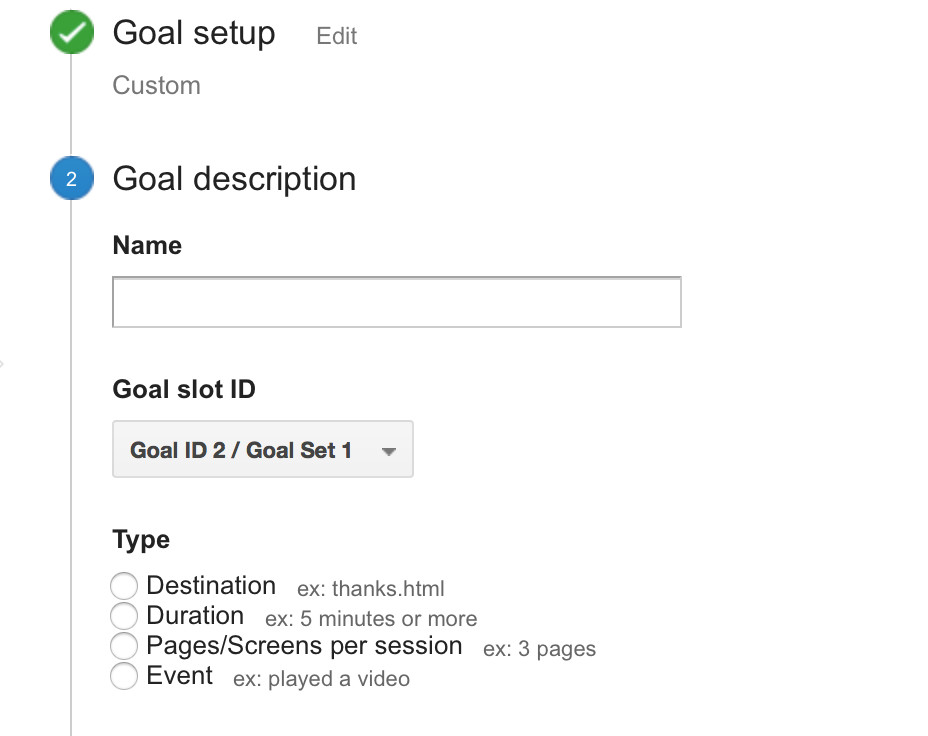Setting website goals to meet business objectives
Setting website goals to meet business objectives

People come to your site, they do things and then they leave. Hopefully, many of them will take actions that are valuable to your business or organisation.
But what things are they doing and how valuable is it?
very site, even “pure” eCommerce sites want visitors to do other things other than making purchases.
There are just some that could add economic value for an organisation:
- Write a review
- Download a brochure
- Complete a lead generation form
- Obtain directions to your businesses real-world location
- Rate a service/product
- Compare or research products.
- Watch a video about a product.
Creating onsite goals enables you to judge the value of the visitors on your site to your business. Ideally, this will be expressed as a monetary value that we will look at shortly.
So where to begin?
While it is tempting to dive straight into the analytics application, it is important to begin by reviewing the key business objectives for the site by answering two simple questions:
- What is the purpose of the business of the website?
- Looking at the site, does it clearly identify the primary purposes of visitors?
If the answer to question 2) is No then the business needs to change its site architecture or content to ensure that the site matches business objectives.
If so, then it is time to create goals. By doing this you can unlikely what are key prioritise the key outcomes. These will be the focuses of goals.
What are Goals?
Google Analytics defines a goal as an action that:
“…represents a completed activity called a conversion that contributes to the success of your business.”
In other words, a goal identifies an onsite outcome that provides economic value to your business.
These fall into four main types:
- Revenue goals (these are typically measured using the separate eCommerce goals).
- Event – records each time the visitor takes a particular action such as: download a whitepaper, watch a video or complete an online form.
- Duration – records when a particular duration on site has been achieved.
- Pages and screens per session: this goal records when a visitor has viewed more than a specified number of pages.
- Destination: this tracks when a visitor navigates to a specified page.

n its simplest form, reporting on goals will show the number of times the threshold set for the goal is achieved. These results will enable the business to create a more informed picture of what actions are being taken on the site. Then next step would be to start segment these data to identify developing patterns such as are visitors who convert from a particular location or are they from different acquisition sources or visited particular pages on site.
Choosing goals, which relate to your key onsite goals you can begin to see well visitors needs and interests with each of your own objectives.
Creating numerical goals
Adding numerical values for your goals is a powerful step to help you to understand the monetary value of your goals.
Within the analytics application, you have the option to include a value for the goal. It is possible that you may not be able to immediately provide a monetary value. Simply begin by putting an amount of 1p and £1 as good value.
The next step is to create a monetary value for the goal that closely matches the benefit onsite actions. This will sometimes involve some work to calculate the impact of the goal on the business.
Another example would be a business-to-business company that uses the site to obtain leads for its sales team. If one in every twenty leads from the site result in a sale and the average value of a sale were £1000 then we could estimate the value of a completed form would be £50.
Sometimes the calculation of goal values is not as straightforward. For example, what is the value of a potential customer downloading a whitepaper on a subject? In order to get an answer, this would involve the use of the business accounting systems and web data.
Connecting the dots….

One of the most difficult elements in creating goal values is to work out what the effect of onsite activity is on sales. The answer is that we can only get an imperfect idea of this but this is still worth investigating.
The biggest issue is how we link up an early visit (or visits) to the site with a later sale or some other onsite goal.
The answer to this is to look for ways to find a piece of data that can link up two different activities (e.g. a visit where a customer downloads a white paper and a subsequent purchase). A primary key is defined as a datum that links two more records.
Below is a simple example of a visitor to the site who downloads a whitepaper but as “payment” must provide their email address. Later on, when that customer goes on to purchase, the email address is captured again and this information can be linked together in the businesses CRM or other sales database.

We can now begin to compare the number of downloaded whitepapers with the number of customers that convert. As a result, we can obtain a conversion rate for customers that previously downloaded a whitepaper and an estimate of their average order value. Now we are in a position to assess the value of each downloaded white paper.
Furthermore, this information gives the company additional information for remarketing. Since downloaders of white paper convert at a higher rate than other visitors (if they aren’t then the business needs to change its marketing) then they will be ideal candidates for further contact with further information or special offers.

Bottom line: Using goals to inform strategic planning
All good marketing strategy must have high-quality information on which to make its decisions. Web data provides a valuable source and goals, in particular, enable you to quantify the value of your online proposition. As a result, they can provide excellent evidence on which to base your business objectives.
Goals can support marketing planning in two ways:
- Support tactical changes in marketing by improving marketing efficiency and effectiveness. This tends to be the main way in which goals are currently used.
- Inform business planning: goal values because they provide a much more holistic view of the economic value of the site and the types of activity that are generating that value they are important sources of information on your product/service offer, the effectiveness of your acquisition activities and the overall effectiveness of your site.

